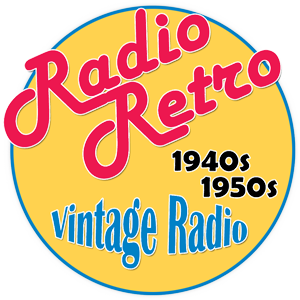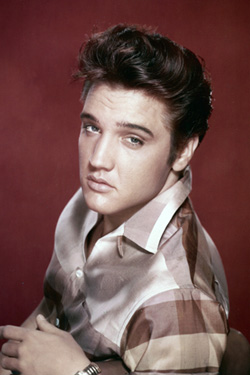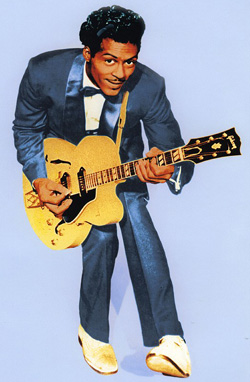 Radio Retro - Music from the 1940s and 1950s
Radio Retro - Music from the 1940s and 1950s
Sounds That Defined an Era
Welcome to Radio Retro, an online radio station based in the United Kingdom, that broadcasts the best music from the 1940s and 1950s to listeners worldwide. Focusing on blues, jazz, swing, big band, and classic melodies, we offer a nostalgic journey through the golden age of music.
Radio Retro provides an enjoyable range of music for those who lived through the 40s and 50s, and new generations discovering this period of influential music.
Tune in and experience a testament to the enduring appeal of classic tunes celebrating the artist who shaped today’s music scene.
A Golden Age of Musical Innovation
The 1940s and 1950s were a time of extraordinary musical creativity with styles that continue to inspire musicians today. Swing and big band music dominated the early 40s, with legendary bandleaders like Glenn Miller, Duke Ellington, and Benny Goodman leading the charge. Their energetic arrangements and unforgettable melodies provided an uplifting soundtrack for a world at war and in recovery.
As the 40s progressed, jazz evolved into new forms, with artists like Charlie Parker, Dizzy Gillespie, and Thelonious Monk pioneering bebop, a faster and more complex style that would shape the future of jazz. Meanwhile, rhythm and blues began gaining traction, setting the stage for the rock and roll explosion of the 1950s.
 The Rise of Rock & Roll and Vocal Harmony Groups
The Rise of Rock & Roll and Vocal Harmony Groups
The 1950s saw the birth of rock and roll, driven by icons such as Elvis Presley, Chuck Berry, and Little Richard. Their electrifying performances and innovative songwriting changed popular music forever bringing a new level of energy and excitement to audiences worldwide.
Alongside rock and roll, vocal harmony groups like The Platters, The Drifters, and The Four Freshmen captivated listeners with smooth harmonies and heartfelt ballads. These groups laid the groundwork for later doo-wop and soul music, influencing generations of artists.
Timeless Ballads and Crooners
Not all music of the era was fast-paced. The 40s and 50s were known for their timeless ballads, with crooners like Frank Sinatra, Nat King Cole, and Perry Como delivering unforgettable performances. Their velvety voices and sophisticated arrangements brought romance and elegance to the airwaves, creating classics that remain beloved today.
Preserving a Musical Legacy
At Radio Retro, we celebrate this incredible era by bringing you the best of 1940s and 1950s music, keeping the spirit of these pioneering artists alive. Whether you're rediscovering these songs or hearing them for the first time, our station provides a window into a golden age of musical artistry.
Tune in and let the sounds of the past transport you to a time when music had style, soul, and an unmistakable sense of rhythm!
Highlights of the 1940s and 1950s: A Defining Era of Change and Culture
The 1940s and 1950s were two of the most transformative decades of the 20th century. From world-changing events to cultural revolutions, this period saw the rise of new music, fashion, technology, and social movements that continue to shape today's world. Here are some of the most significant highlights from this remarkable era.
The 1940s: A Decade of War and Resilience
The early 1940s were dominated by World War II, a global conflict that affected nearly every aspect of life. From 1939 to 1945, nations were engaged in a struggle that led to major technological and scientific advancements, including the development of radar, jet engines, and the atomic bomb. The war ended in 1945 with the surrender of Nazi Germany and Imperial Japan, bringing relief but also new global tensions with the start of the Cold War.
 The Birth of the United Nations (1945)
The Birth of the United Nations (1945)
In 1945, as a response to the devastation of World War II, the United Nations (UN) was established to promote peace, security, and international cooperation. This organisation replaced the League of Nations and plays a crucial role in global diplomacy today.
The Golden Age of Cinema
Hollywood thrived in the 1940s, producing some of the most iconic films in history. Classics like Casablanca (1942), Citizen Kane (1941), and It's a Wonderful Life (1946) showcased masterful storytelling and memorable performances. The war also influenced cinema, with propaganda films and war dramas dominating the box office.
Musical Evolution: The Swing and Jazz Era
Big band swing music peaked in the early 1940s, with artists like Glenn Miller, Duke Ellington, and Benny Goodman setting the standard. As the decade progressed, jazz began to evolve, giving birth to bebop, led by musicians such as Charlie Parker and Dizzy Gillespie. Meanwhile, rhythm and blues (R&B) started gaining popularity, setting the stage for the rock and roll explosion of the next decade.
The Start of the Cold War
As the war ended, tensions between the United States and the Soviet Union escalated, leading to the Cold War, a period of geopolitical rivalry that would last for decades. The Iron Curtain divided Eastern and Western Europe, and events like the Berlin Blockade (1948-1949) and the Korean War (1950-1953) marked the beginning of a long struggle between democracy and communism.
 The 1950s: A Decade of Innovation and Cultural Shifts
The 1950s: A Decade of Innovation and Cultural Shifts
The 1950s saw the birth of rock and roll, with pioneering artists like Elvis Presley, Chuck Berry, Little Richard, and Buddy Holly changing the sound of popular music forever. This new style, influenced by R&B and country music, captured the youth's rebellious spirit and became the soundtrack of a generation.
Television Takes Over
The 1950s was the golden age of television, with millions of households acquiring TV sets. Shows, like I Love Lucy, The Twilight Zone, and The Ed Sullivan Show, became cultural staples, bringing entertainment into homes like never before. Television also played a key role in politics, with events like the first televised presidential debate between John F. Kennedy and Richard Nixon in 1960 marking a shift in how campaigns were conducted.
The Space Race Begins
In 1957, the Soviet Union launched Sputnik 1, the world’s first artificial satellite, sparking the Space Race between the US and the USSR. This event marked the beginning of an era of space exploration that would eventually lead to the moon landing in 1969.
The Civil Rights Movement Gains Momentum
While racial segregation was still prevalent in the 1950s, the decade saw the beginnings of the Civil Rights Movement in the United States. In 1955, Rosa Parks refused to give up her seat on a bus in Montgomery, Alabama, leading to the Montgomery Bus Boycott, a pivotal moment in the fight against racial injustice. Leaders like Dr. Martin Luther King Jr. began emerging as key figures advocating for equality.
The Birth of Youth Culture and Consumerism
The 1950s saw the rise of teenagers as a distinct cultural group, with their fashion, music, and slang. The post-war economic boom allowed young people to spend more on leisure activities, fueling music, movies, and fashion. Iconic stars like James Dean and Marilyn Monroe became symbols of youthful rebellion and Hollywood glamour.
Technological and Scientific Advancements
The 1950s brought significant advancements in technology, including the development of transistors, which led to the creation of smaller and more efficient radios and computers. This decade also saw progress in medicine, Dr. Jonas Salk developed the polio vaccine, which saved millions of lives.
A Legacy That Lives On
The 1940s and 1950s were decades of profound transformation. From the aftermath of World War II to the cultural explosion of rock and roll, television, and the Civil Rights Movement, this era laid the groundwork for the modern world. The music, films, and innovations of the time continue to influence today’s society, proving that the golden age of the mid-20th century still holds a special place in history.